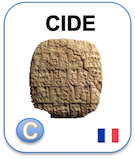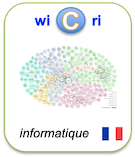Can Discrete Joint Action Be Synergistic? Studying the Stabilization of Interpersonal Hand Coordination
Identifieur interne : 000708 ( Pmc/Checkpoint ); précédent : 000707; suivant : 000709Can Discrete Joint Action Be Synergistic? Studying the Stabilization of Interpersonal Hand Coordination
Auteurs : Veronica Romero ; Rachel Kallen ; Michael A. Riley ; Michael J. RichardsonSource :
- Journal of experimental psychology. Human perception and performance [ 0096-1523 ] ; 2015.
Abstract
The human perceptual-motor system is tightly coupled to the physical and informational dynamics of a task environment. These dynamics operate to constrain the high-dimensional order of the human movement system into low-dimensional, task-specific synergies—functional groupings of structural elements that are temporarily constrained to act as a single coordinated unit. The aim of the current study was to determine whether synergistic processes operate when coacting individuals coordinate to perform a discrete joint-action task. Pairs of participants sat next to each other and each used 1 arm to complete a pointer-to-target task. Using the uncontrolled manifold (UCM) analysis for the first time in a discrete joint action, the structure of joint-angle variance was examined to determine whether there was synergistic organization of the degrees of freedom employed at the interpersonal or intrapersonal levels. The results revealed that the motor actions performed by coactors were synergistically organized at both the interpersonal and intrapersonal levels. More importantly, however, the interpersonal synergy was found to be significantly stronger than the intrapersonal synergies. Accordingly, the results provide clear evidence that coacting individuals can become temporarily organized to form single synergistic 2-person systems during performance of a discrete joint action.
Url:
DOI: 10.1037/xhp0000083
PubMed: 26052696
PubMed Central: 4801325
Affiliations:
Links toward previous steps (curation, corpus...)
Links to Exploration step
PMC:4801325Le document en format XML
<record><TEI><teiHeader><fileDesc><titleStmt><title xml:lang="en">Can Discrete Joint Action Be Synergistic? Studying the Stabilization of Interpersonal Hand Coordination</title><author><name sortKey="Romero, Veronica" sort="Romero, Veronica" uniqKey="Romero V" first="Veronica" last="Romero">Veronica Romero</name></author><author><name sortKey="Kallen, Rachel" sort="Kallen, Rachel" uniqKey="Kallen R" first="Rachel" last="Kallen">Rachel Kallen</name></author><author><name sortKey="Riley, Michael A" sort="Riley, Michael A" uniqKey="Riley M" first="Michael A." last="Riley">Michael A. Riley</name></author><author><name sortKey="Richardson, Michael J" sort="Richardson, Michael J" uniqKey="Richardson M" first="Michael J." last="Richardson">Michael J. Richardson</name></author></titleStmt><publicationStmt><idno type="wicri:source">PMC</idno><idno type="pmid">26052696</idno><idno type="pmc">4801325</idno><idno type="url">http://www.ncbi.nlm.nih.gov/pmc/articles/PMC4801325</idno><idno type="RBID">PMC:4801325</idno><idno type="doi">10.1037/xhp0000083</idno><date when="2015">2015</date><idno type="wicri:Area/Pmc/Corpus">001918</idno><idno type="wicri:Area/Pmc/Curation">001918</idno><idno type="wicri:Area/Pmc/Checkpoint">000708</idno></publicationStmt><sourceDesc><biblStruct><analytic><title xml:lang="en" level="a" type="main">Can Discrete Joint Action Be Synergistic? Studying the Stabilization of Interpersonal Hand Coordination</title><author><name sortKey="Romero, Veronica" sort="Romero, Veronica" uniqKey="Romero V" first="Veronica" last="Romero">Veronica Romero</name></author><author><name sortKey="Kallen, Rachel" sort="Kallen, Rachel" uniqKey="Kallen R" first="Rachel" last="Kallen">Rachel Kallen</name></author><author><name sortKey="Riley, Michael A" sort="Riley, Michael A" uniqKey="Riley M" first="Michael A." last="Riley">Michael A. Riley</name></author><author><name sortKey="Richardson, Michael J" sort="Richardson, Michael J" uniqKey="Richardson M" first="Michael J." last="Richardson">Michael J. Richardson</name></author></analytic><series><title level="j">Journal of experimental psychology. Human perception and performance</title><idno type="ISSN">0096-1523</idno><idno type="eISSN">1939-1277</idno><imprint><date when="2015">2015</date></imprint></series></biblStruct></sourceDesc></fileDesc><profileDesc><textClass></textClass></profileDesc></teiHeader><front><div type="abstract" xml:lang="en"><p id="P1">The human perceptual-motor system is tightly coupled to the physical and informational dynamics of a task environment. These dynamics operate to constrain the high-dimensional order of the human movement system into low-dimensional, task-specific synergies—functional groupings of structural elements that are temporarily constrained to act as a single coordinated unit. The aim of the current study was to determine whether synergistic processes operate when coacting individuals coordinate to perform a discrete joint-action task. Pairs of participants sat next to each other and each used 1 arm to complete a pointer-to-target task. Using the uncontrolled manifold (UCM) analysis for the first time in a discrete joint action, the structure of joint-angle variance was examined to determine whether there was synergistic organization of the degrees of freedom employed at the interpersonal or intrapersonal levels. The results revealed that the motor actions performed by coactors were synergistically organized at both the interpersonal and intrapersonal levels. More importantly, however, the interpersonal synergy was found to be significantly stronger than the intrapersonal synergies. Accordingly, the results provide clear evidence that coacting individuals can become temporarily organized to form single synergistic 2-person systems during performance of a discrete joint action.</p></div></front></TEI><pmc article-type="research-article"><pmc-comment>The publisher of this article does not allow downloading of the full text in XML form.</pmc-comment>
<pmc-dir>properties manuscript</pmc-dir>
<front><journal-meta><journal-id journal-id-type="nlm-journal-id">7502589</journal-id><journal-id journal-id-type="pubmed-jr-id">4732</journal-id><journal-id journal-id-type="nlm-ta">J Exp Psychol Hum Percept Perform</journal-id><journal-id journal-id-type="iso-abbrev">J Exp Psychol Hum Percept Perform</journal-id><journal-title-group><journal-title>Journal of experimental psychology. Human perception and performance</journal-title></journal-title-group><issn pub-type="ppub">0096-1523</issn><issn pub-type="epub">1939-1277</issn></journal-meta><article-meta><article-id pub-id-type="pmid">26052696</article-id><article-id pub-id-type="pmc">4801325</article-id><article-id pub-id-type="doi">10.1037/xhp0000083</article-id><article-id pub-id-type="manuscript">NIHMS766621</article-id><article-categories><subj-group subj-group-type="heading"><subject>Article</subject></subj-group></article-categories><title-group><article-title>Can Discrete Joint Action Be Synergistic? Studying the Stabilization of Interpersonal Hand Coordination</article-title></title-group><contrib-group><contrib contrib-type="author"><name><surname>Romero</surname><given-names>Veronica</given-names></name></contrib><contrib contrib-type="author"><name><surname>Kallen</surname><given-names>Rachel</given-names></name></contrib><contrib contrib-type="author"><name><surname>Riley</surname><given-names>Michael A.</given-names></name></contrib><contrib contrib-type="author"><name><surname>Richardson</surname><given-names>Michael J.</given-names></name></contrib><aff id="A1">University of Cincinnati</aff></contrib-group><author-notes><corresp id="FN1">Correspondence concerning this article should be addressed to: Veronica Romero, Department of Psychology, ML 0376, 4150 Edwards C1, University of Cincinnati, Cincinnati, OH 45221. <email>romerovc@mail.uc.edu</email></corresp><fn id="FN2"><p>Veronica Romero, Rachel Kallen, Michael A. Riley, and Michael J. Richardson, Department of Psychology, University of Cincinnati.</p></fn></author-notes><pub-date pub-type="nihms-submitted"><day>10</day><month>3</month><year>2016</year></pub-date><pub-date pub-type="epub"><day>08</day><month>6</month><year>2015</year></pub-date><pub-date pub-type="ppub"><month>10</month><year>2015</year></pub-date><pub-date pub-type="pmc-release"><day>21</day><month>3</month><year>2016</year></pub-date><volume>41</volume><issue>5</issue><fpage>1223</fpage><lpage>1235</lpage><pmc-comment>elocation-id from pubmed: 10.1037/xhp0000083</pmc-comment>
<abstract><p id="P1">The human perceptual-motor system is tightly coupled to the physical and informational dynamics of a task environment. These dynamics operate to constrain the high-dimensional order of the human movement system into low-dimensional, task-specific synergies—functional groupings of structural elements that are temporarily constrained to act as a single coordinated unit. The aim of the current study was to determine whether synergistic processes operate when coacting individuals coordinate to perform a discrete joint-action task. Pairs of participants sat next to each other and each used 1 arm to complete a pointer-to-target task. Using the uncontrolled manifold (UCM) analysis for the first time in a discrete joint action, the structure of joint-angle variance was examined to determine whether there was synergistic organization of the degrees of freedom employed at the interpersonal or intrapersonal levels. The results revealed that the motor actions performed by coactors were synergistically organized at both the interpersonal and intrapersonal levels. More importantly, however, the interpersonal synergy was found to be significantly stronger than the intrapersonal synergies. Accordingly, the results provide clear evidence that coacting individuals can become temporarily organized to form single synergistic 2-person systems during performance of a discrete joint action.</p></abstract><kwd-group><kwd>joint action</kwd><kwd>interpersonal coordination</kwd><kwd>motor synergies</kwd><kwd>motor control</kwd><kwd>uncontrolled manifold</kwd></kwd-group></article-meta></front></pmc><affiliations><list></list><tree><noCountry><name sortKey="Kallen, Rachel" sort="Kallen, Rachel" uniqKey="Kallen R" first="Rachel" last="Kallen">Rachel Kallen</name><name sortKey="Richardson, Michael J" sort="Richardson, Michael J" uniqKey="Richardson M" first="Michael J." last="Richardson">Michael J. Richardson</name><name sortKey="Riley, Michael A" sort="Riley, Michael A" uniqKey="Riley M" first="Michael A." last="Riley">Michael A. Riley</name><name sortKey="Romero, Veronica" sort="Romero, Veronica" uniqKey="Romero V" first="Veronica" last="Romero">Veronica Romero</name></noCountry></tree></affiliations></record>Pour manipuler ce document sous Unix (Dilib)
EXPLOR_STEP=$WICRI_ROOT/Ticri/CIDE/explor/HapticV1/Data/Pmc/Checkpoint
HfdSelect -h $EXPLOR_STEP/biblio.hfd -nk 000708 | SxmlIndent | more
Ou
HfdSelect -h $EXPLOR_AREA/Data/Pmc/Checkpoint/biblio.hfd -nk 000708 | SxmlIndent | more
Pour mettre un lien sur cette page dans le réseau Wicri
{{Explor lien
|wiki= Ticri/CIDE
|area= HapticV1
|flux= Pmc
|étape= Checkpoint
|type= RBID
|clé= PMC:4801325
|texte= Can Discrete Joint Action Be Synergistic? Studying the Stabilization of Interpersonal Hand Coordination
}}
Pour générer des pages wiki
HfdIndexSelect -h $EXPLOR_AREA/Data/Pmc/Checkpoint/RBID.i -Sk "pubmed:26052696" \
| HfdSelect -Kh $EXPLOR_AREA/Data/Pmc/Checkpoint/biblio.hfd \
| NlmPubMed2Wicri -a HapticV1
|
| This area was generated with Dilib version V0.6.23. | |



